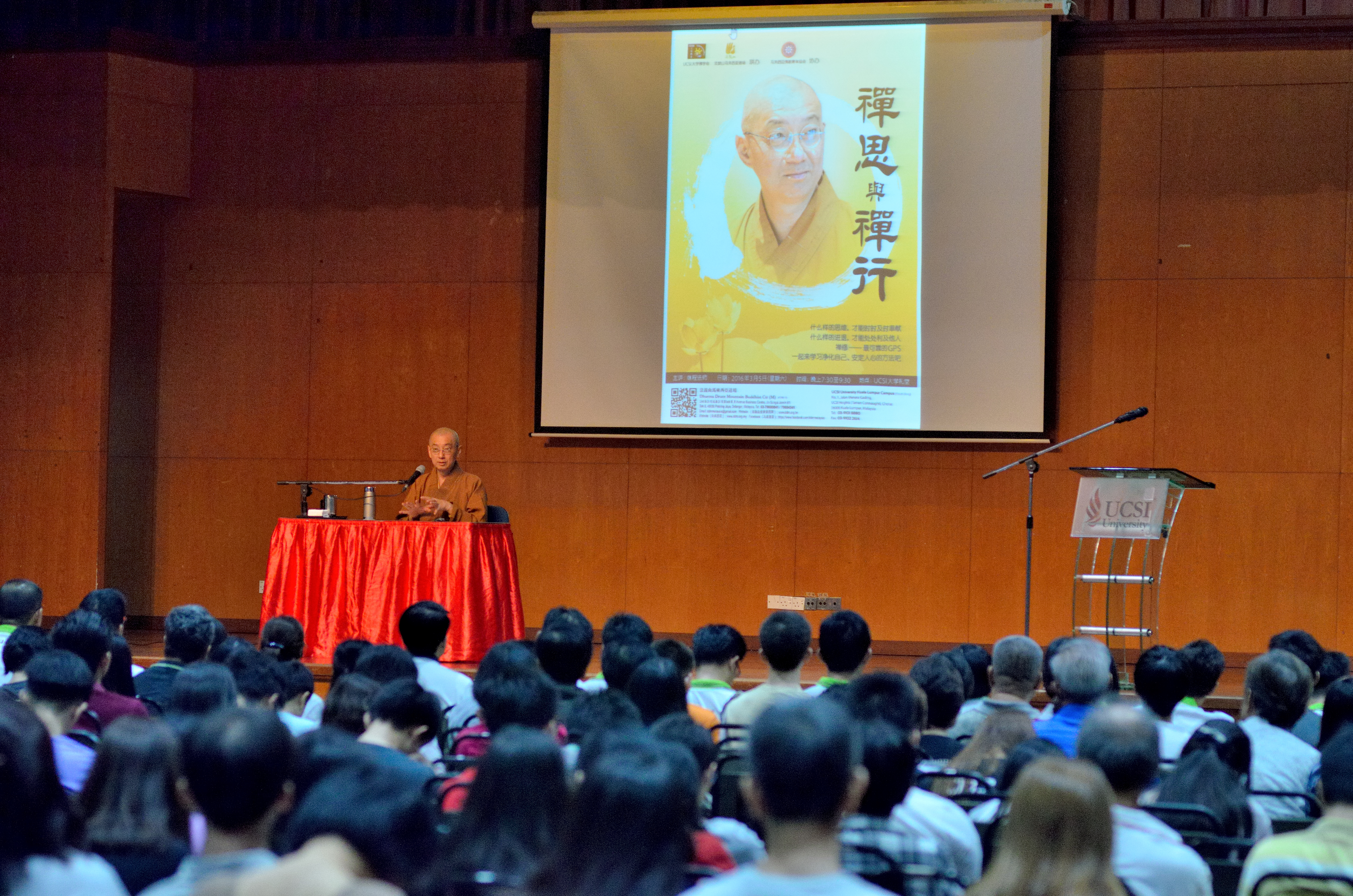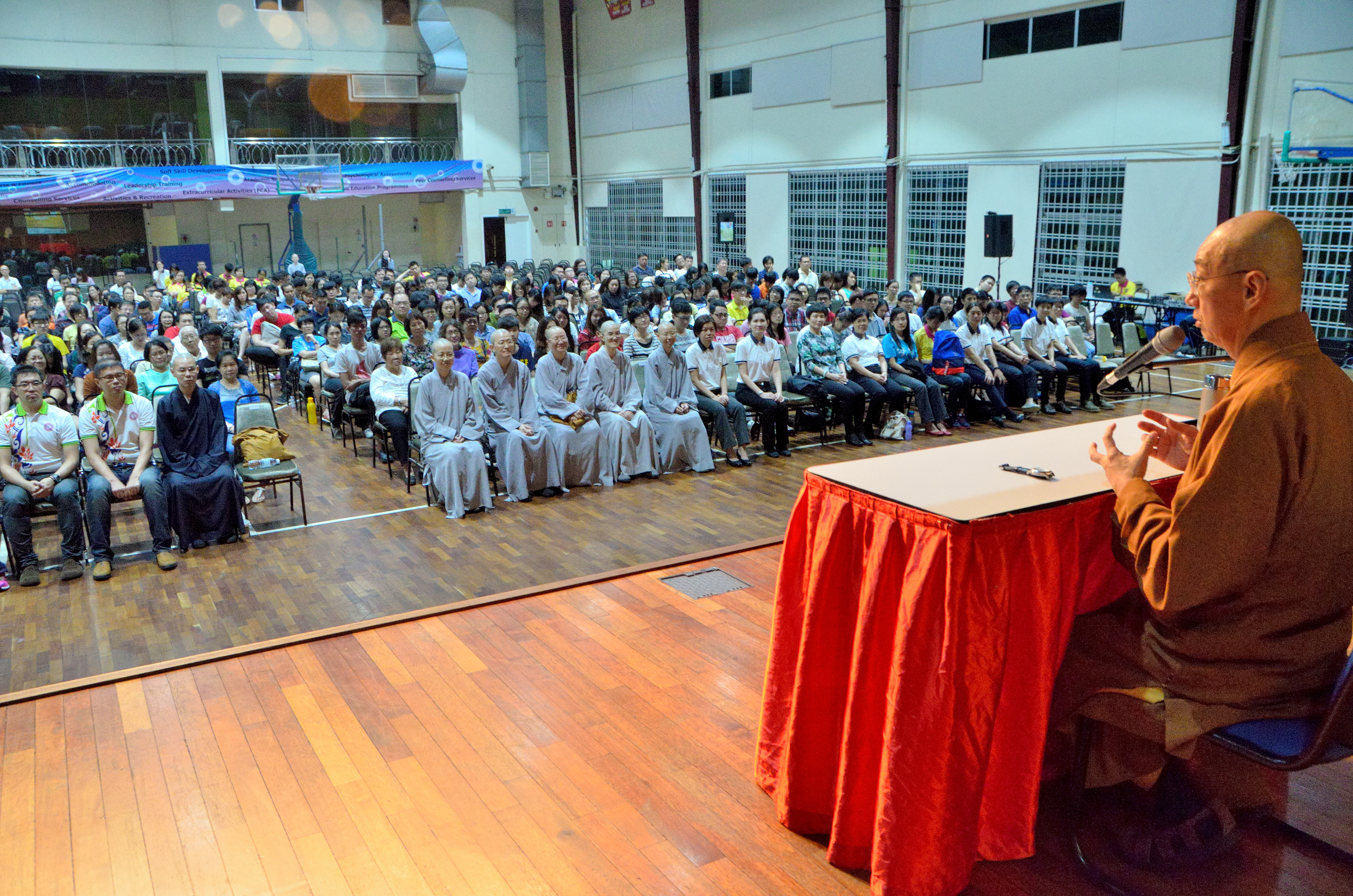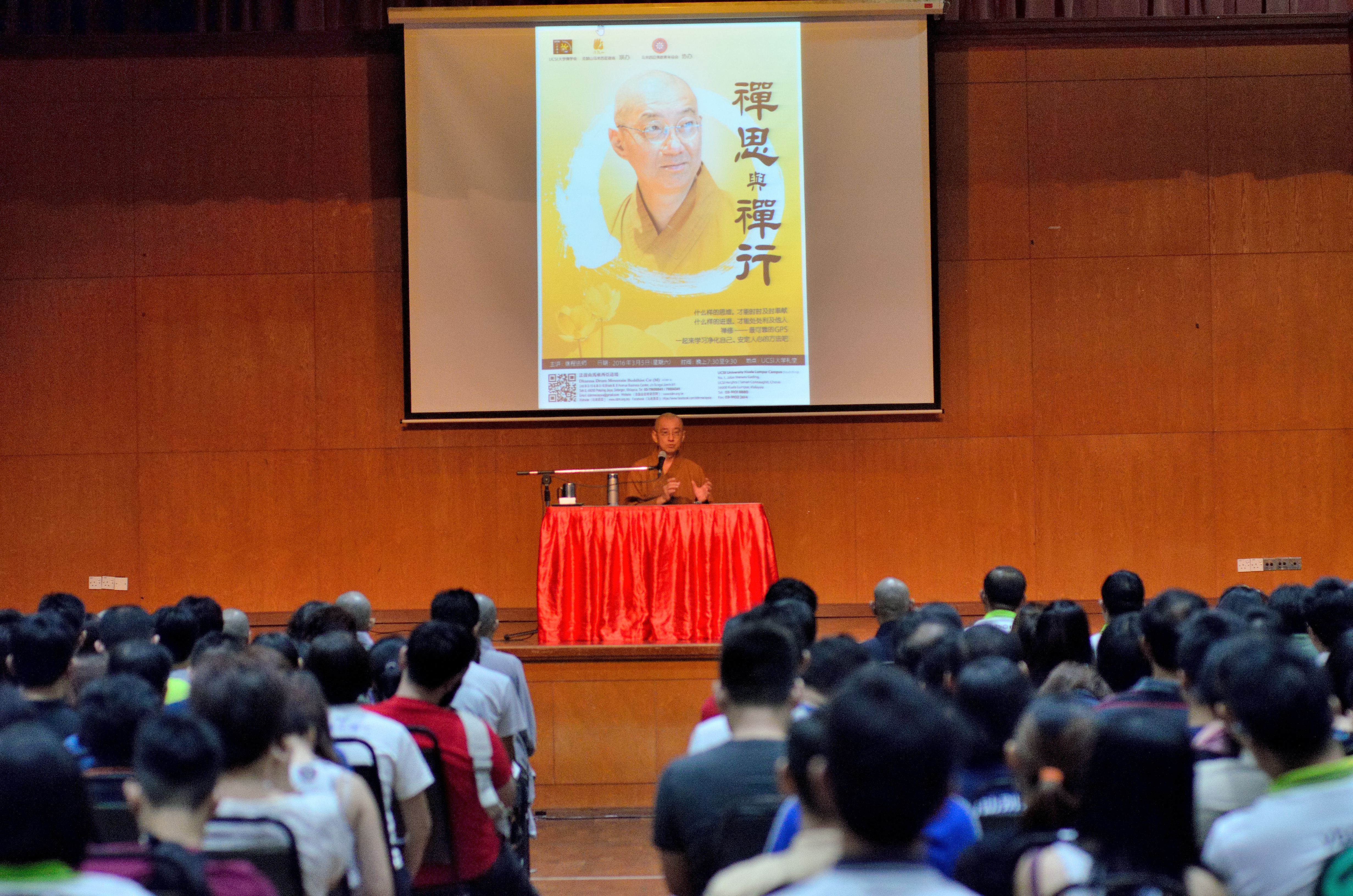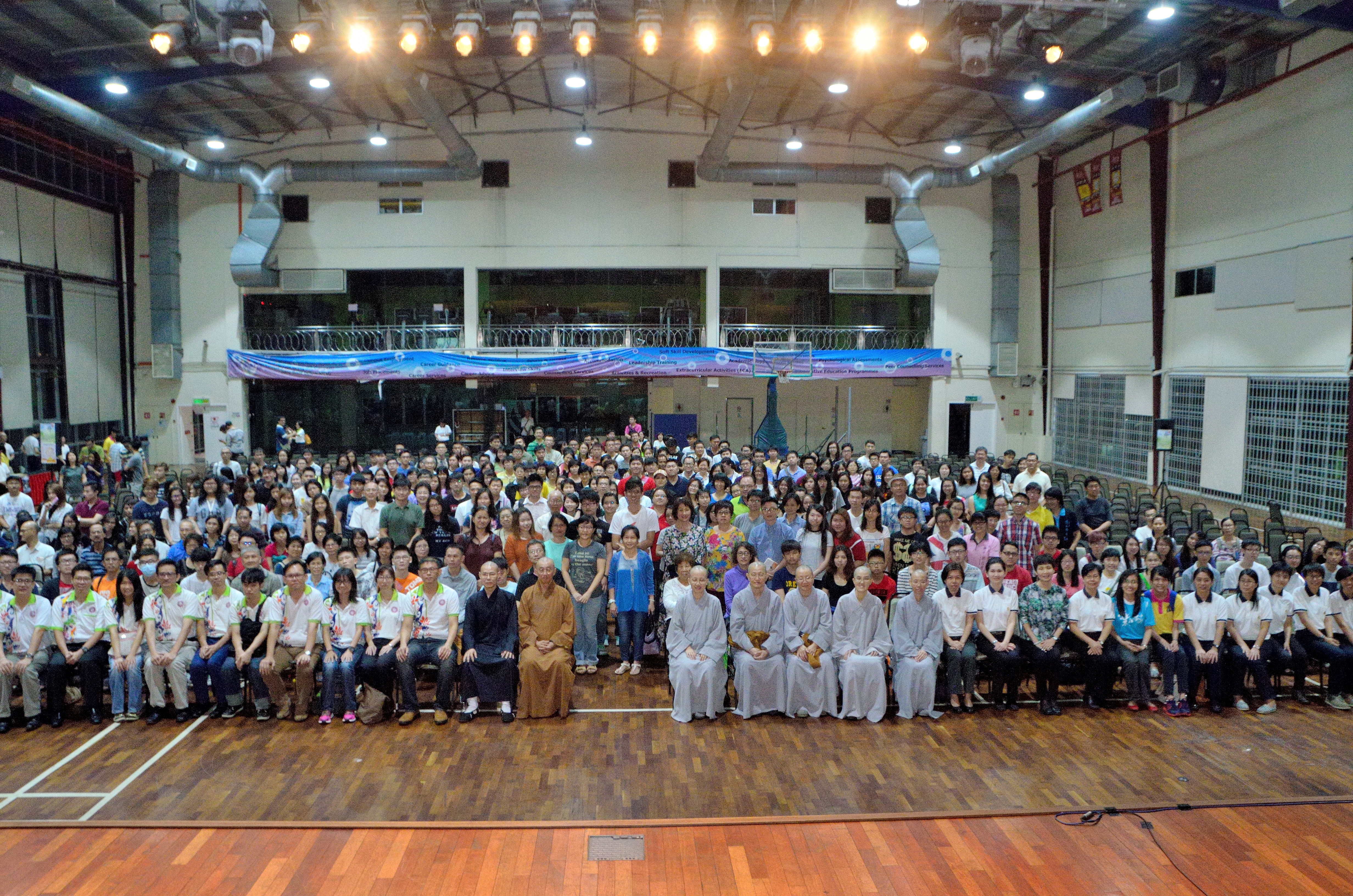Ven. Ji Cheng on Concepts and Practices of Chan

“Chan” has become a fashionable word these days, as can be seen in expressions such as the “Chan of tea”, the “Chan of painting”, and the “Chan of reading”. To many people, “Chan” seems to signify freedom and spontaneity. However, are these activities really relevant to the essentials of Chan practice?
On March 5, 2016, Dharma Drum Mountain Buddhist Centre Malaysia and the Buddhist Society of UCSI University organized a lecture titled “Concepts and Practices of Chan” at the university’s auditorium. Co-organized by the Young Buddhist Association of Malaysia, attended by nearly 450 participants, the lecture featured Ven. Ji Cheng’s sharing on the philosophy and application of Chan practice.

To start off, the venerable led participants to experience Chan by learning to relax and rein in the mind. In a short session of sitting meditation practice, participants experienced an endless stream of wandering thoughts keep sweeping, many of which they had hardly noticed before. In our daily life, when our five sensory organs are in constant contact with external phenomena, we have unconsciously developed the habitual pattern of grasping and attaching to outer conditions and objects, thereby allowing our minds to be disturbed all the time.
The venerable said that while Chan practice is an ultimate way to train and cultivate our minds, an utter prerequisite is to follow correct concepts and methods of practice. The essential concept of Chan practice is to live in the present without dwelling in the past or dreaming of the future, and simply adapt to current causes and conditions while remaining in right mindfulness. Methods of Chan practice may vary from person to person according to their different capacities and tendencies, such as reciting Amitabha Buddha’s name, counting the breath, silent illumination, and investigating the huatou, all of which can be used as antidotes to our scattered and insufficient minds. In addition to the concepts and methods of practice, constant practice of right mindfulness is also important. It is through this step-by-step approach to go deeper in our practice that we can develop both concentration and wisdom, reflecting a calm and clear mind.

Some people, however, have the misconception that since Chan practice features freedom and spontaneity practitioners can then behave in an unrestrained manner and do without the precepts and sitting meditation. Moreover, there are self-proclaimed Chan masters who only confuse people without actually conforming to the Dharma themselves. Given these alarming facts, the venerable again stressed the importance of developing right understanding and right views.
He also emphasized that the central philosophy of Chan teaching reflects the Dharma as taught by the Buddha. The essence of Buddhist teaching is marked by co-dependent arising and the nature of emptiness, in that all phenomena, coming into being through many causes and conditions converging together, are neither independently nor permanently existing. All sentient beings originally possess the pure true nature, but their Buddha-nature and wisdom is covered due to their attachment to a false self and discrimination of phenomena. Chan practice, therefore, is meant to help us develop our inner wisdom, let go of our attachment, and transform our mental afflictions into bodhi, or enlightenment.

Toward the end of the lecture, the venerable encouraged participants to practice Chan in a comprehensive yet gradual approach, and take Chan practice as an integral part of Buddhist study, thereby experiencing the wonderful benefits of applying Chan teachings in daily life.
Report: Yi-Ling He
Photograph: Syuan-Sheng Li
Translated by Frances Liu (劉珮如) and edited by Chiacheng Chang (張家誠)